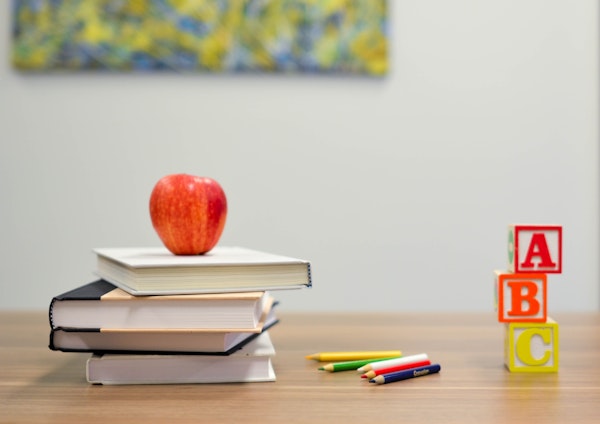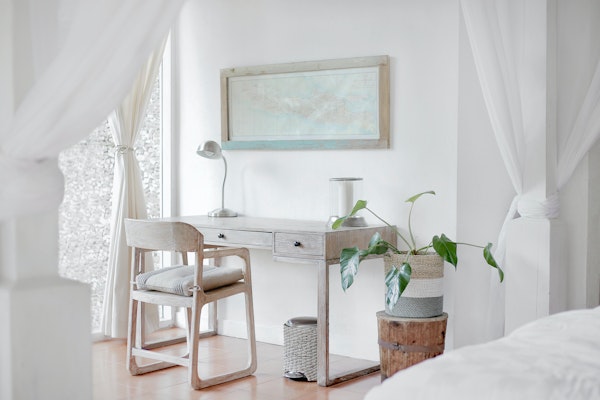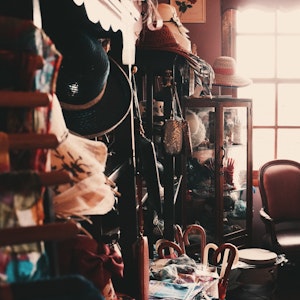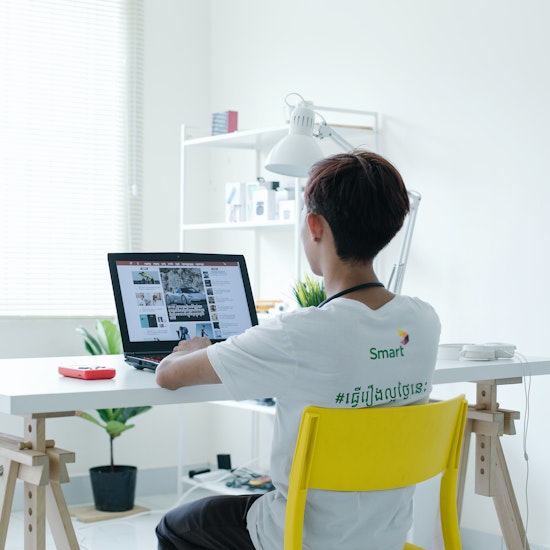Almost all parents are in the same boat right now across America and even around the world. They want their children to receive a strong education and great socialization experiences. But they don’t want to expose their children or family members to COVID-19.
Even if parents are not worried about the actual illness, they may be deeply concerned about how well their children will do with all the new social distancing measures at school. Or they may worry about the disruption COVID-19 may cause to the education process as various students or faculty members fall ill at in-person schools.
There are plenty of unknowns for everyone involved. The administrators, health officials, government leaders, and parents. So many parents are deciding to take matters into their own hands more now than ever before.
This is the perfect time to think about a new dream home to accommodate everyone’s “new normal.” People want bigger homes with more rooms and plenty of space for parents to work from home and children to learn from home. For some families, everyone working and studying at home may be a beautiful new way of life far beyond 2020.

Ways to Bring the Classroom Home in 2020
Thankfully, there are numerous options available to parents who don’t want to send their children to in-person school in the fall for whatever reason.
Virtual school/online school
Many public and private schools and universities are only offering online school in the fall. So lots of parents don’t have a choice. Virtual learning from home may be a necessity. Even schools that are meeting face-to-face may have a hybrid program where students are in school a few days per week and the rest of the time classes are virtual. Or, parents may decide to go with the virtual option voluntarily whether it is a K12 online school or through their local school district.
For some parents whose children are learning virtually, they’ve decided to recruit a friend or two to come do virtual classes together at home. This way their children can experience a little bit of a “normal” social life with a buddy and won’t have to be completely isolated. But they also won’t have to wear masks and stay 6 feet away from their friends. They can help each other learn and eat lunch together. Some families may even swap houses to help each other out with work schedules.
Some parents are paying for a few hours of tutoring for their own children or pooling resources with several families to hire a tutor to help their children with virtual school each weekday or a few days per week. And some are hiring a nanny to oversee the schooling process if the parents don't have time to keep tabs on children's schoolwork themselves.
Pandemic pods/micro-schools
Some parents don’t want to wait around for schools to figure things out and are banding together with a few other families to create learning pods—education groups where the parents pool their money to bring a teacher in privately for their small group of children.
This is a new type of one-room schoolhouse. It’s perfect for parents who want their children to be educated at home or away from the public school setting but who need professional help and support and don’t want to juggle being a parent, teacher, and working to support the family.
According to www.microschoolrevolution.com micro-schools are:
"outsourced homeschooling," they are free from the bureaucracy, standardized tests, and mandatory curriculum that defines today's public school system. Microschools tend to be efficiently run, and student engagement is remarkably high.
Parents create classroom space in their homes or may build structures in their backyards. Others buy or build new homes with more space to accommodate their children’s educational needs. A basement, FROG, large extra bedroom, office, or other living space may work, depending on how many children will be involved. When the weather is good, a screened-in back porch, deck, or patio may be a perfect classroom space, as well.
Sometimes the teacher hosts the learning space at their house. It just depends on the particular teacher and families and what works best for them.
Homeschool
More parents than ever are also choosing to homeschool their children themselves. Millions of new homeschooling parents are seeking curriculum options and setting up study rooms for their children at home for the first time. Things just feel so out of control right now in the world and the education system. This is one way parents can regain a semblance of control and normalcy for their families.
Children learning at home in one way or another may be the norm this school year and maybe even beyond. Millions of parents want to create beautiful, functional, engaging learning spaces for their children, teens, and college students at home.

What Does a Great Home Learning Space Need?
The most important things your children need are your love and support for them and their education. Beyond that, there is room for a lot of creativity and flexibility depending on your particular children’s needs and how many friends will also be in the space. So don’t feel like you have to limit yourself to one particular pattern or design.
You can dedicate a pre-existing space in your home like the basement, a loft, a FROG, or an extra bedroom to be a learning environment. Or you can plan a dedicated school room into your custom home design for a new dream home. Another option is to build a separate school building in the backyard, if you have room and zoning approval, to accommodate your students and any friends, as well.
1. Designated spaces for learning
Depending on your children’s ages, you may need specific areas for certain activities. It would be ideal if they can change areas throughout the day for a bit of variety.
Computer desk near an outlet
No matter what your child’s age, if they are involved in virtual school activities or online research, they will need a quiet place to work online away from distractions. Consider designing a separate desk space with storage for school supplies for each child who will be in the learning center.
Also, think about whether you want your children’s learning area to be close to the kitchen or to your own home office area if you are also working at home. Will you need to be able to go back and forth often between the classroom and other spaces in your home?
Desk/table for writing
Children, teens, and college students who learn at home all need a place where they can have enough space for a book, a notebook, and room to write by hand. Be sure the area has plenty of light and is comfortable with a sturdy chair for back support. Depending on how many children are using the space, you can have a large shared table or each one can have their own desk.
Large area for working on bigger projects
Everyone needs a place where they can sprawl out for larger group projects, making posters, working on art projects, or doing science experiments. This may be a large table, a hard floor surface, or a counter.
Consider including a sink in the schoolroom for quick cleanups for paintbrushes and spills, as well as for frequent hand washing.
Play area
Young children need time to work and time to play. If you have younger elementary school students or preschool children in your home, you may want to design a corner just for toys and play. Maybe even a space that can accommodate small tricycles with rubber wheels, seesaws, or other indoor play equipment.

2. Privacy for online school meetings
If you know that each child will need privacy for internet meetings, consider creating separate learning spaces in each of their bedrooms so they can close the door, if needed. Or you can have a main learning center somewhere in the home where all the children work together at times and then also have separate stations for internet calls in each child’s bedroom.
If you are going to homeschool your children or you have a teacher coming to the house to instruct them, then you need a larger one-room approach. Think about if they will need to be online or working on computers and where they will need them as you design your space.
3. Personal space and storage for each student
Children tend to do best when they each have their own space, supplies, and personal storage areas. Otherwise, they may end up fighting over who gets to use the desk or who gets to use certain supplies.
With a custom learning space, you can choose to have built-in cabinets, cubbies, or bookshelves for each child with organization systems in place for each one. This can go a long way to contributing to a more peaceful learning environment.
4. Easy-to-clean kid-friendly flooring
Be sure to choose a hard floor surface that is easy to wipe up. It’s nice to have a rug to sit on for younger kids. So you can invest in a washable area rug then let the rest of the floor be a surface you can wipe down or mop when needed.
Choose materials like non-slip tile, luxury vinyl planking, hardwoods, laminate, engineered hardwoods, or even polished concrete. These spill-proof flooring options will make your life a lot easier.

5. Natural light to improve productivity
Studies show that everyone does better living and learning in an environment where there is plenty of natural light and views of the outdoors. Children need indirect or direct sunlight and views of nature in their learning spaces to feel and do their best.
Natural light improves mood, boosts productivity, decreases depression/anxiety, and improves a sense of wellbeing. It may even help with promoting better sleep, better immune system function, and other health benefits, as well.
Get plenty of light by having large windows or even a wall of windows. Include a skylight or two in the space. Consider having this room face the south so it will get some direct sunlight during the day.
6. Different seating options for studying, projects, and reading
Sitting in the same chair all day can be tiring and uncomfortable. Children and teens will appreciate having a variety of seating choices. They’ll need sturdy ergonomic chairs for sitting at their desk to do computer or writing work. But then for reading, they may like a soft, cozy spot. Some even like to work on the floor at times.
Favorite places to sit
- Area rug
- Bean bag chair
- Chair with good back support (for desk work)
- Balance ball chairs/exercise ball chairs
- Couch
- A daybed with lots of pillows
- Built-in window seat with cushion
- Hammock (inside or outside) swing or chair
- Spider web swing
- Loft bed with study area below
Also, be sure to consider a desk that is adjustable to allow students to alternate between sitting and standing.

7. Personalization for each child’s learning space
When children and teens are involved in helping to decorate their learning space, they often enjoy it more. And they take more ownership. Maybe you feel comfortable letting them paint the room however they’d like themselves. Or perhaps they can at least help choose the colors, some of the decorations, and decide where things go.
For a more creative option, why not create an amazing reading nook with a built-in window seat or in a custom under-the-stairs playhouse? Your child can sneak away to enjoy some private reading time in a cozy little house built just for her.
Decorating ideas for your homeschool space
Walls
- Posters and wall hangings
- Chalkboard paint for one wall
- Whiteboards
- A bulletin board to decorate differently each month or season
- A painted mural
- Wallpaper or a wallpaper mural
Lighting
- Fun lighting for the ceiling, desk lamps, workspaces, and maybe even some strings of fairy lights
Colors
- Bright, fun, engaging colors for the walls, desks, chairs, floors, and storage shelves or bins
- If there are multiple children, let each child have a specific color at their workstation
Themes
- Choose a favorite book, movie, or video game as a theme
- Decide on a favorite period of history or historical character(s) for a theme
- A built-in or freestanding playhouse, castle, or barn for a reading or study nook

8. Outside learning spaces
When your child learns at home, they don’t have to be limited to one schoolroom. When the weather is nice outside, why not let them work outdoors for part of the day?
Outdoor schooling ideas
- Screened-in back porch or front porch
- Deck or patio
- Yard
- Swingset
With some outdoor furniture like a dining table and chairs, your child can even take a laptop or tablet outside for classes. Or they may enjoy reading in a porch swing on the back porch or in a hammock chair hanging from a tree branch or a swingset.
9. Exercise areas indoors and outdoors
Sitting for seven hours per day isn’t healthy for anyone. It’s important to let students get some fun and exercise in the schedule each day. This improves blood flow, mental focus, academic performance, immune function, emotional wellbeing, and overall health. If you can get the kids outside in the sunshine and around green spaces, that can really boost their mood and help ward off depression and anxiety, as well. It can even increase concentration and short-term memory.
Indoor exercise
- Area for riding small bikes for young kids in a metal building with concrete floor
- Yoga mats for doing stretches and exercises
- Area for throwing soft, squishy balls
- Open area for doing jumping jacks, dancing, or running in place
- Gymnastics mat for doing somersaults and cartwheels
Outdoor exercise
- Swingset
- Large, flat grassy area for running and playing games like softball, kickball, or tag
- A flat concrete area for basketball, hopscotch, riding bikes, rollerblading, or riding scooters
- Walking trails or walks in the neighborhood
- PE equipment like a badminton net, horseshoe pit, croquet course, jump ropes, obstacle courses, etc...
10. Room for growth with your child’s education
If possible, try to leave some empty space in your design for your new learning room or backyard school building. This way the space can grow with your children and you will have flexibility if you see there are any new needs.
Of course, it’s possible to do homeschooling and home learning with a small space. But if you are designing a new home, you have the freedom to make the space a little bigger than you think you may need just in case you want to add another friend or two. Or you may want to add a new learning station or activity in the future.
Ready to start building your new homeschool room, homework room, or virtual learning space?
We’re here to help build your family’s dream home including your new homeschooling or classroom space.
Please contact us today to schedule a consultation.
Our homebuilding areas include places like:
Lexington, Irmo, Ballentine, Chapin, Columbia, Blythewood, West Columbia, Forest Acres, Pine Ridge, the Lake Murray area, and more.
Related
10 Ideas for a Stunning Custom Home Office Design
Planning Enough Storage Space for Your New Home
Is Now a Good Time to Build a New Home with COVID-19?
How Can You Maximize Natural Light in a Custom-Built Home?
What Are the Benefits of Natural Light in a Custom Home Design?
Resources
Back to School? “No Thanks” Say Millions of New Homeschooling Parents
(fee.org)
For Parents Who Can Afford It, a Solution for Fall: Bring the Teachers to Them - (Washington Post)
10 Benefits of Physical Activity for Kids (parents.com)
Outdoor Learning and Green Time—How Kids Benefit from Learning and Playing in Nature (parentingscience.com)
Recommended Articles

Is a Cluttered Home Harming Your Family's Health?
Clutter is much more than just an embarrassment. It can negatively impact your family's physical, mental, and spiritual health.

21 Benefits of an Uncluttered Home
Clutter may seem fairly harmless, but it can create some problems for us, especially if there is a lot of it. How could your family benefit from less clutter?

Planning for Enough Storage Space in Your New Home
Find out how much storage space your family needs in order to store your normal essentials and enough non-perishable food and paper products.
